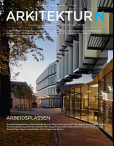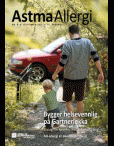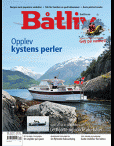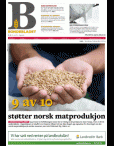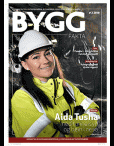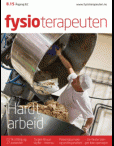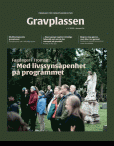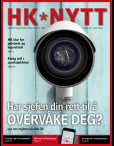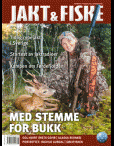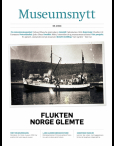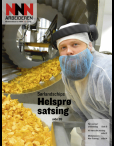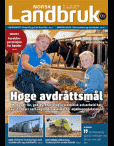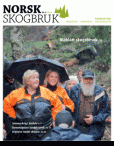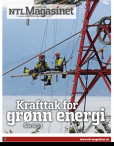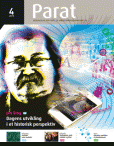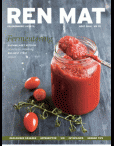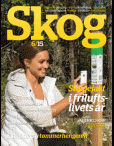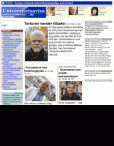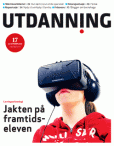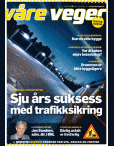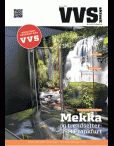NBS-nytt
09.09.2019
Viva le zebrafish! Silver dress, brighten up with blue stripes and yellowish fins, what a magnificent fish. Before it reaches the fish tanks of numerous aquarist amateurs and scientists, the zebrafish originated from South-Asia, notably from the South-East regions of the Himalaya. In these regions, its natural environments are low currant creeks and stagnant waters, such as rice fields.
... Bearing the scientific name Danio rerio", the zebrafish belongs to the teleostei, the infraclass that groups together bony fish (superclass of Osteichtyiens) and represents around 98% of all fish species. Since its first use for research by George Streisinger at the University of Oregon, more than 50 years ago, the zebrafish has emerged as a strong animal model for scientific research. There are multiple reasons for the zebrafish's success as a research animal model. Practical ones first, the zebrafish is a robust and small-sized organism (adults: 2-5cm long) so numerous individuals can be housed and bred in relatively small volumes of water, at a reasonable cost. In addition, it has a relatively short circle of life and from the age of 3 month, females can lay hundreds of eggs every week; these eggs will hatch after 3 days post-fecundation. Importantly, since the introduction of the Ethics" 3R principles (Replacement, Reduction and Refinement), the zebrafish has been recognized as an alternative animal model to be used as replacement for higher vertebrates, when possible (1).
Furthermore, the zebrafish shows numerous advantages at the scientific level. Both the fecundation and the development of zebrafish larvae occur outside the maternal organism, which facilitates the study of developmental processes. Moreover, the tissues of zebrafish larvae are relatively transparent, which allows the non-invasive, live-observation of biological processes at high resolution, something incredibly difficult to achieve with higher vertebrate models. Another important advantage is its sequenced and annotated genome, which reveals that around 70% of human genes possess a clear ortholog in zebrafish (2). In addition, this animal model is suitable for genetic engineering, that has been well-documented over the years, granting scientists access to numerous transgenic and mutant fish lines, for example having one cell type selectively labeled with a fluorescent tag (3). Although the wild type adult fish is not as transparent as the embryo and larval stages, the mutant lines Casper, TraNac and Crystal provide a relatively transparent adult stage. Among other benefits are : the use of sequence-dependent morpholino (4,5), nucleic acid that is injected into the egg to block the expression of certain genes, the ability of the zebrafish to regenerate certain organs (liver, heart, fins, ...) (6) and an immune system that possess the principal elements, cell types and mechanism of the vertebrate canonic immune system (7). It is thanks to these multiple advantages that the zebrafish community is constantly growing over the years.
From the early emphasis on developmental biology and genetic studies (8-10), the zebrafish model is now extensively used in numerous biological fields. In toxicology, the zebrafish has been taken advantage of for its high sensitivity to the environment, the convenience of its exposure to potential toxins by immersion and the high number of biological replicates that can be obtained (in contrast to e.g mice where the high cost and ethical restrictions limit the number of individuals used per.experiment). Since a few years, the zebrafish larva has been recommended by the Organization for Economic Co-operation and Development (OECD) to conduct preliminary toxicity testing (Zebrafish Embryo Acute Toxicity Test) (11-13). Numerous publications can for example be found on the evaluation of marine pollutants, such as microplastics (14,15) and nanoparticles (16). The zebrafish model has also gained interest from the field of genomics and epigenomics (17), among whom the group of Peter Aleström (Oslo-NMBU) investigates how gene expression and epigenetics are impacted by environmental radiations and microgravity. The possibility to have access to a small and transparent brain is something that is valuable for neuroscientists, especially for those studying neurogenesis (18). Last year, Elizabeth Haynes won the Nikon smallworld imaging competition with a striking video showing the development of the sensory nervous system of zebrafish larvae. In interesting examples in this field the zebrafish model is being used for in behavioral neurosciences (19,20) to understand more about the processes of sleeping (21) and nociception (22). It also emerged that the zebrafish is very good to model human diseases such as brain neurodegeneration giving rise to Alzheimer (23) and Parkinson (24). Moreover, the group of Camila Esguerra (NCMM-Oslo) generates new zebrafish models to study the genesis of both seizure and epilepsy, and to identify novel active therapeutic compounds. In glycobiology, the zebrafish is used to study the importance of glycosylation during development (25) and in human pathologies; a recent publication extended the usefulness of the model by producing the glycomic profiles of eight organs from adult zebrafish (26). Among other fields, many publications have been published on the use of the zebrafish model to study cardio-vascular diseases (27) and metabolic diseases (28) such as obesity and diabetes (29). Nonetheless, the interesting ability of the zebrafish to regenerate some of its organs, such as the heart and the retina (30-32) has also been put under scrutiny with an eye on human applications. Further studies allowed better comprehension of the complicated process of wound-healing (33), with many laboratories studying how the caudal fin of the zebrafish regenerates after being clipped (34).
An interesting aspect of the zebrafish, something I am passionate about, is its immune system. Fish and mammalian immune systems are evolutionary a lot closer than what is commonly believed. The adaptive part of the immune system coincides,
Gå til medietFurthermore, the zebrafish shows numerous advantages at the scientific level. Both the fecundation and the development of zebrafish larvae occur outside the maternal organism, which facilitates the study of developmental processes. Moreover, the tissues of zebrafish larvae are relatively transparent, which allows the non-invasive, live-observation of biological processes at high resolution, something incredibly difficult to achieve with higher vertebrate models. Another important advantage is its sequenced and annotated genome, which reveals that around 70% of human genes possess a clear ortholog in zebrafish (2). In addition, this animal model is suitable for genetic engineering, that has been well-documented over the years, granting scientists access to numerous transgenic and mutant fish lines, for example having one cell type selectively labeled with a fluorescent tag (3). Although the wild type adult fish is not as transparent as the embryo and larval stages, the mutant lines Casper, TraNac and Crystal provide a relatively transparent adult stage. Among other benefits are : the use of sequence-dependent morpholino (4,5), nucleic acid that is injected into the egg to block the expression of certain genes, the ability of the zebrafish to regenerate certain organs (liver, heart, fins, ...) (6) and an immune system that possess the principal elements, cell types and mechanism of the vertebrate canonic immune system (7). It is thanks to these multiple advantages that the zebrafish community is constantly growing over the years.
From the early emphasis on developmental biology and genetic studies (8-10), the zebrafish model is now extensively used in numerous biological fields. In toxicology, the zebrafish has been taken advantage of for its high sensitivity to the environment, the convenience of its exposure to potential toxins by immersion and the high number of biological replicates that can be obtained (in contrast to e.g mice where the high cost and ethical restrictions limit the number of individuals used per.experiment). Since a few years, the zebrafish larva has been recommended by the Organization for Economic Co-operation and Development (OECD) to conduct preliminary toxicity testing (Zebrafish Embryo Acute Toxicity Test) (11-13). Numerous publications can for example be found on the evaluation of marine pollutants, such as microplastics (14,15) and nanoparticles (16). The zebrafish model has also gained interest from the field of genomics and epigenomics (17), among whom the group of Peter Aleström (Oslo-NMBU) investigates how gene expression and epigenetics are impacted by environmental radiations and microgravity. The possibility to have access to a small and transparent brain is something that is valuable for neuroscientists, especially for those studying neurogenesis (18). Last year, Elizabeth Haynes won the Nikon smallworld imaging competition with a striking video showing the development of the sensory nervous system of zebrafish larvae. In interesting examples in this field the zebrafish model is being used for in behavioral neurosciences (19,20) to understand more about the processes of sleeping (21) and nociception (22). It also emerged that the zebrafish is very good to model human diseases such as brain neurodegeneration giving rise to Alzheimer (23) and Parkinson (24). Moreover, the group of Camila Esguerra (NCMM-Oslo) generates new zebrafish models to study the genesis of both seizure and epilepsy, and to identify novel active therapeutic compounds. In glycobiology, the zebrafish is used to study the importance of glycosylation during development (25) and in human pathologies; a recent publication extended the usefulness of the model by producing the glycomic profiles of eight organs from adult zebrafish (26). Among other fields, many publications have been published on the use of the zebrafish model to study cardio-vascular diseases (27) and metabolic diseases (28) such as obesity and diabetes (29). Nonetheless, the interesting ability of the zebrafish to regenerate some of its organs, such as the heart and the retina (30-32) has also been put under scrutiny with an eye on human applications. Further studies allowed better comprehension of the complicated process of wound-healing (33), with many laboratories studying how the caudal fin of the zebrafish regenerates after being clipped (34).
An interesting aspect of the zebrafish, something I am passionate about, is its immune system. Fish and mammalian immune systems are evolutionary a lot closer than what is commonly believed. The adaptive part of the immune system coincides,










